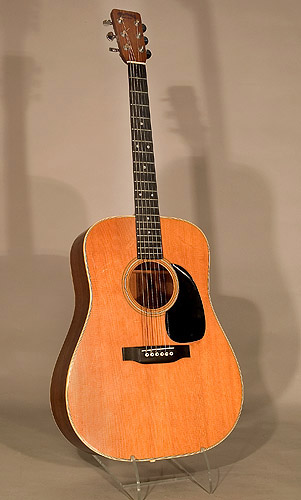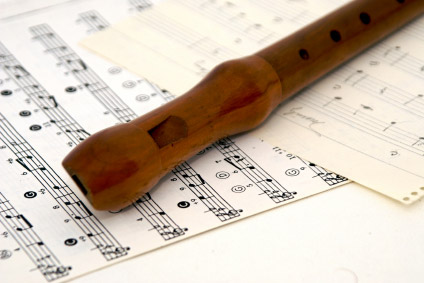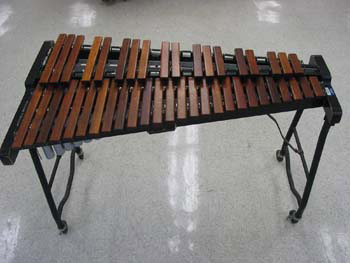Lesson: Engineered Music
(Provided courtesy of IEEE and TryEngineering)
In this lesson series for ages 8-18, teams of students explore the engineering behind recorder manufacturing, and then design, construct, test, and evaluate a working musical instrument using easily found materials. Time required: Two to three 45-minute sessions.
Objectives
- Learn about engineering design.
- Learn about planning and construction.
- Learn about teamwork and working in groups.
Anticipated Learner Outcomes
As a result of this activity, students should develop an understanding of:
- Structural engineering and design
- Problem solving
- Teamwork
Resources and Materials
Teacher Resource Documents (pages 1-5)
Student Worksheets (pages 7-9)
Student Resource Sheet (page 6)
One set of materials for each group of students:
- Non toxic glue, string, paperclips, paper, cardboard, cardboard tubes (such as from paper towel or toilet paper rolls), paper, rubber bands, wire, aluminum foil, plastic wrap, tape, juice box, wooden dowels. (the materials list may be adapted to point students toward a specific instrument, such as a drum or a xylophone).
For Teachers: Click here (pages 3 and 4) to see how this lesson aligns with National Science Education Standards and to find suggested further reading material.
Sample Instrument – The Recorder
This is a woodwind musical instrument similar to the tin whistle.
It has holes for seven fingers and one thumb. The body of the recorder is usually tapered from the mouthpiece end. It was very popular in medieval times but declined in popularity in the 1700’s when orchestral woodwind instruments (oboe, flute, and clarinet) came into favor because of their greater range.
In the mid 20th century, engineers were able to design facilities to manufacture inexpensive recorders out of plastic. Now, they are one of the cheapest instruments to buy in bulk, and as they are reasonably easy to learn to play, are ideal for teaching children basic music performance.

Courtesy of Iowa State University Department of Music and Theater
How it Works
The recorder is held straight out from the player’s lips (rather than to the side, as with a flute). The breath of the player is constrained by a block (A) that limits how much air can enter the instrument.
The air travels down a channel (B) that is called the “windway.” As it leaves the windway, the player’s breath hit the “labium” (C) which causes the column of air to oscillate. The length of the column of air is adjusted by finger holes in the front and a thumb hole at the back of the instrument.
Adjusting how the fingers cover the holes will adjust the note produced by the air, and adjusting how hard the breath is blown will adjust the pitch. An instrument with fewer holes or a different length, or no block would create different sounds…or perhaps sounds that cannot be reproduced consistently.
Class Procedure
1. Show students the various Student Reference Sheets. These may be read in class, or provided as reading material for the prior night’s homework.
2. Divide students into groups of 2-3 students, providing a set of materials per group.
3. Explain that students must develop their own working musical instrument from everyday items.
4. Students meet and develop a plan for their instrument. They agree on materials they will need, write or draw their plan, and then present their plan to the class.
5. Note: The instrument must be able to repeat the same set of three different sounds in sequence three times to be a success.
6. Student teams may request additional quantities of any of the materials provided, up to two sets of materials per team. They may also trade unlimited materials with other teams to develop their ideal parts list.
7. Student groups next execute their plans. They may need to rethink their plan, request other materials, trade with other teams, or start over. This project may require overnight drying of glued segments before the performance phase.
8. Each student group presents and performs their instrument
9. Teams complete an evaluation/reflection worksheet, and present their findings to the class.
Tips
For younger students, focus on instruments such as drums, guitars, or xylophones which do not require students to put the instrument in or near their mouths.
Additional web links:
Musical Instruments of the World
Video: How a recorder is made
Take a look at these wild computer-generated instruments, from a DVD called Animusic.
You can watch more video clips and purchase DVDs at the Animusic website.
Filed under: Grades 6-8, Grades 9-12, Lesson Plans
Tags: Manufacturing Engineering, Music engineering, Research on Learning










